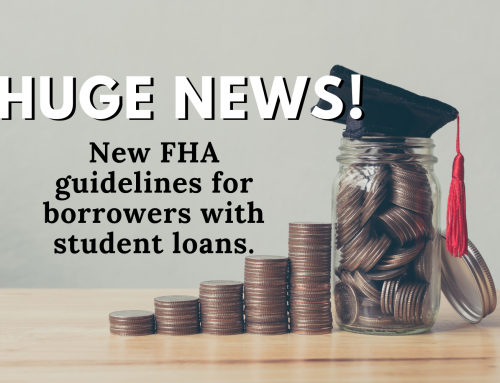
If you are in the market to buy a new home but find it challenging to come up with a large down payment, there are actually several down payment assistance programs in Michigan that can help borrowers. USDA Rural Development Loans, FHA Loans, VA Loans and MSHDA Loans are some of the federal programs available. Each loan works differently and in this article, we will be focusing specifically on USDA Loans and FHA loans.
Both FHA and USDA loans are guaranteed by the federal government. FHA loans are backed by The Federal Housing Administration while USDA loans are insured by The United States Department of Agriculture. Both FHA and USDA loans are still funded through private lenders. The government simply guarantees these loans, making homeownership attainable to borrowers with lower incomes, less than perfect credit and small down payments. USDA and FHA loans also make it easier for borrowers who have previously filed bankruptcy or foreclosure to qualify.
So, what are the differences between an FHA and USDA loan?
Down Payment, Income Requirements and Property Location
An FHA loan will require a down payment of 3.5% and a minimum credit score of 580. USDA loans require a higher credit score of 640 but zero down payment options are available.
While FHA loans do not have an income limit, the USDA Housing program has household income limits that home buyers must meet to be eligible for financing. These income limits will vary depending on household size, location of property and the number of dependents living in the household.
Another major difference between FHA and USDA loans is the geographical location of the desired property. While FHA loans can be used for most properties in Michigan, USDA loans are generally limited to rural areas.
So, when choosing between an FHA loan and USDA loan, perhaps the 3 key factors would be down payment amount, income limit and property location. If you prefer to live in a suburban neighborhood and you exceed the income limit of a USDA Rural Development loan, an FHA loan might be a better choice for your situation.
However, if you enjoy living in a rural area and meet the income requirements of a USDA loan, the Rural Development loan may be the best path to home ownership. Even if you have 3.5% or more to put down on a USDA loan, you can take advantage of the zero down payment option and keep more money in your pocket or use it to pay off other debt.
Although USDA and FHA loans have similarities, the best choice will depend on the individual buyer. Additionally, both FHA loans and USDA loans require that the property will be the buyers primary residence and buyers will be responsible for insurance premiums. For more information, on FHA loans, USDA loans and other down payment assistance programs, contact Julie Krumholz today at: 586-382-5482.
Julie Krumholz, Michigan FHA Lender and USDA Lender
Julie Krumholz is a Michigan approved FHA lender and USDA loan specialist at Superior National Bank. With over 30 years of experience in the mortgage industry, Julie can help you navigate through the various loan programs and explain complex loan information in simple terms, allowing you to make the most informed decisions during the home buying process.
More Information on FHA and USDA Loans:
Michigan FHA Loans: Loan Limits, Eligibility and Other Common Questions





